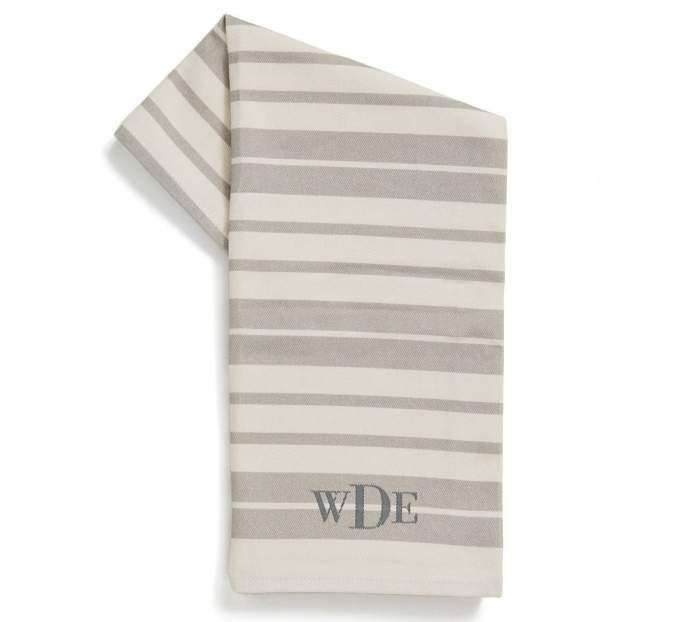The Ultimate Guide to Monogramming
Product customization continues to be a hot trend in 2021. Demand for personalization is still growing, proving shoppers are increasingly searching for unique products. According to the State of Fashion 2019, personalization and curation are projected to become a much higher priority for shoppers, with 41% of shoppers demanding a personalized shopping experience. The report shows that when it comes to products, it isn’t about having the largest selection available, but the most appropriate and rich selection for shoppers. One notable personalization feature that has been continuously popular is monogramming.
Monogramming Overview
A monogram is a design that can be created by embellishing single letters or initials or connecting two or more letters to form one symbol. Monograms can be used on apparel, as well as accessories such as promotional products, hats and jackets.
Personal monograms can be created by using initials of an individual’s name, but each use case has a different traditional design. Monograms for men are typically are seen in block format, whereas for women, the center initial is slightly larger and serves as the individual’s last name. A couple’s monogram mimics the women’s design, with the outer initials commemorating each party’s first name and the center initial indicating the shared last name. Monograms have evolved into a unisex design ranging from big curly letters to sleek blocked initials.

Courtesy of Palmetto Twist
Monogramming Best Practices
Personalization Techniques
When practicing custom monogramming, pair product material with personalization techniques. Evaluate each product’s material and choose a method of personalization that will make custom monograms easy to produce with a high-quality finish.
Apparel items like hats and shirts should use embroidery to monogram initials or names, whereas debossing techniques work best for leather and suede. Regarding items such as stationary, consider embossing or printing.



Courtesy of 28Collective
Design Guidelines
It’s easy for shoppers to be overwhelmed with the vast amount of options for imprint colors, font sizing, taglines, monogram shapes, and text placement available. Create a design guideline with tips on monogram placement and apply customization rules to prevent larger than life designs. Additionally, utilize tools that allows shoppers to only apply monogramming in specific areas, typically called the canvas area of a product. When the shopper has created their design, the product customizer should allow for visual rendering and previewing of the design.

Courtesy of Home Design
Preview
Find a customization platform with a responsive designer. As more consumers shop on mobile devices, responsive design is a must. Allowing customers to design and preview a monogrammed product as changes are made in real-time will increase buying confidence and reduce cart abandonment.

Courtesy of 28Collective
Awareness
Increase awareness of custom monogramming capabilities by displaying the option on the homepage banner, as a main navigation item, in the product name, or on the product display page. Also utilize social sharing features to share a design to followers on social media for organic promotion. Customization is a selling point, but it won’t increase sales if customers are unable to find the option.
Product Customization Journey
In summary, successful monogramming capabilities can thrive once a comprehensive journey for executing customization has been created. First, prior to implementing monogramming, ensure that the ecommerce customization platform that has been selected to utilize monogramming has an intuitive user interface, provides live visual rendering, and thus can facilitate a seamless customer experience. Next, make sure production is equipped to handle custom monogramming and that a quality control process is in place to ensure any embroidery, engraving hand stamping or embossing is clean and clear. Most importantly, ensure that the ecommerce customization platform that has been selected can create production-ready output files that can assist in ensuring accuracy and reducing throughput times.




